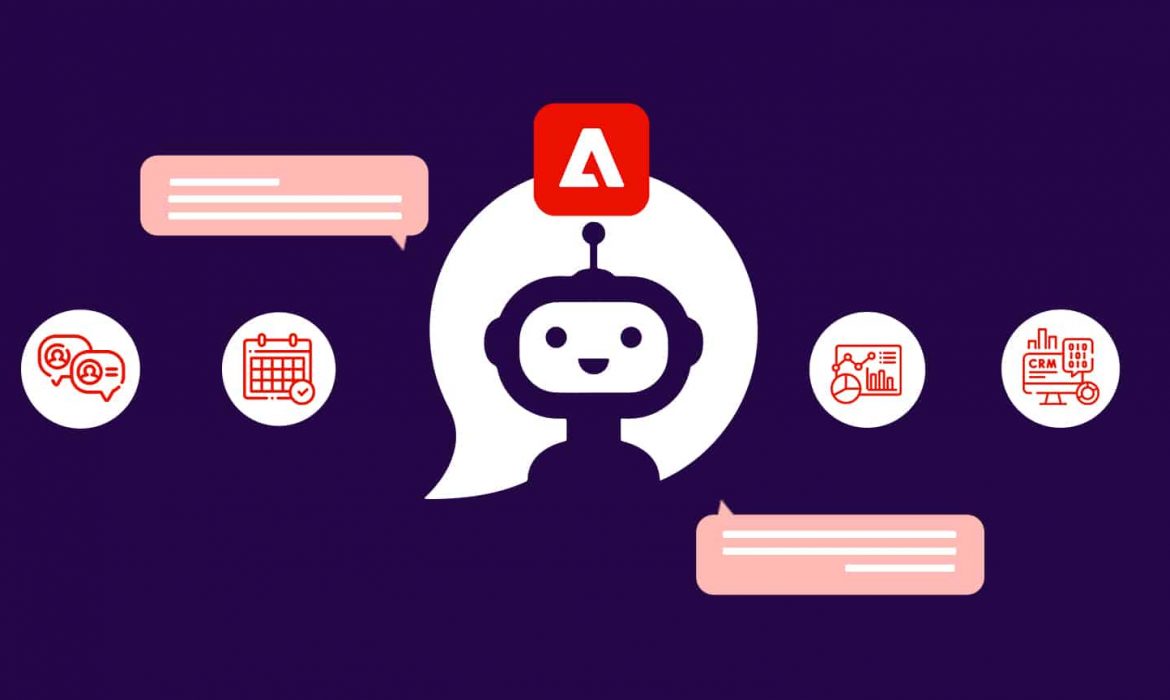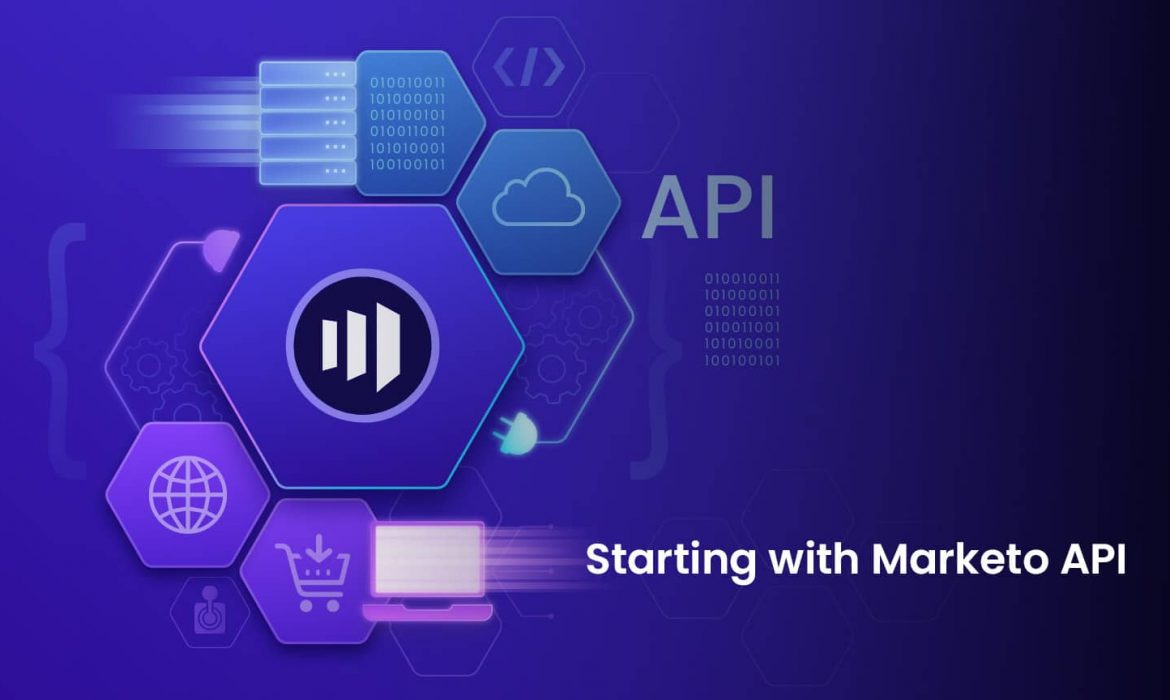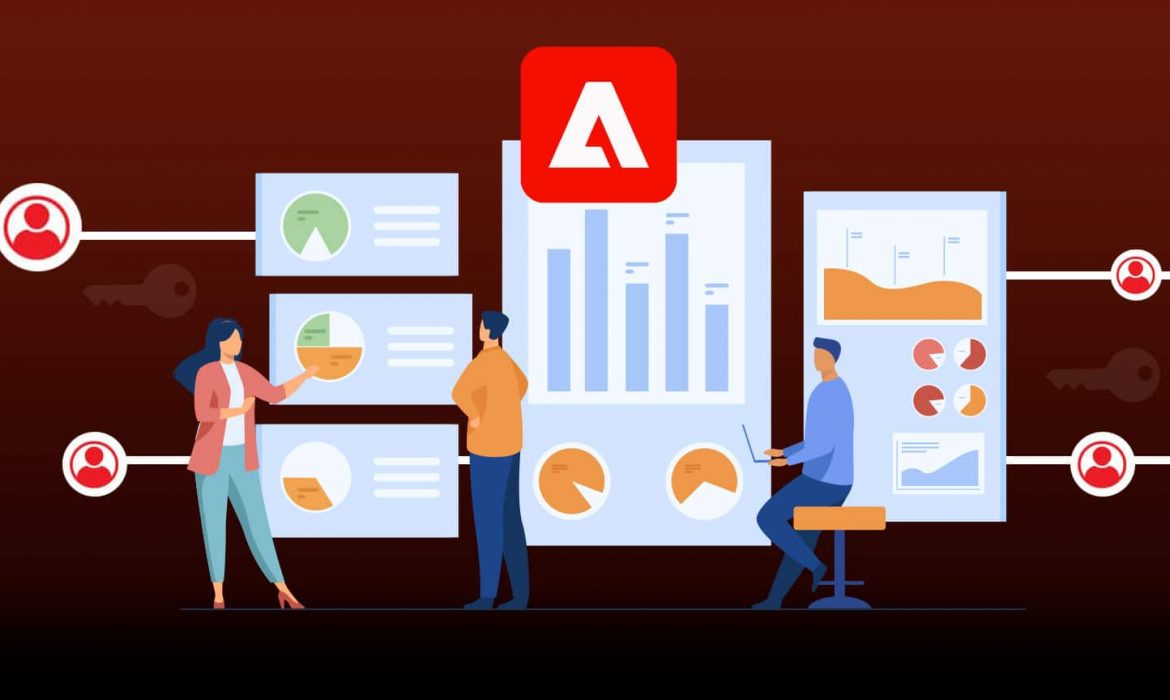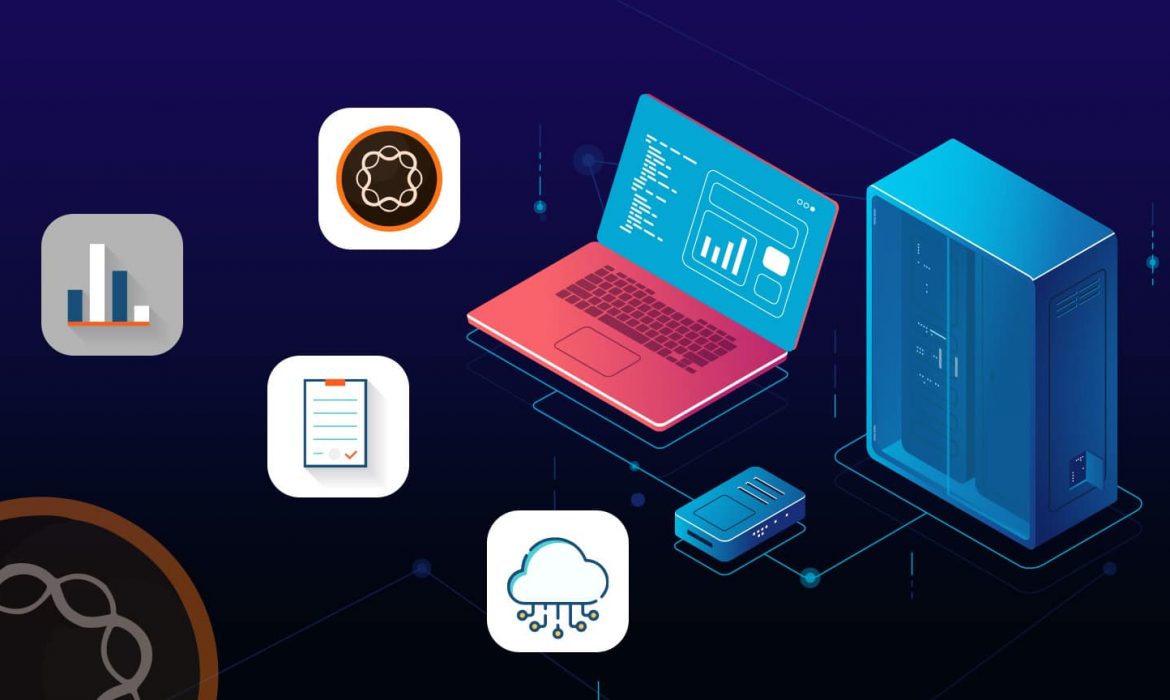What is the New Inside Adobe Dynamic Chatbot?
Today’s digital marketing demands a dynamic, responsive, and intelligent approach. Enter Adobe Dynamic Chat – an integral feature of Marketo Engage that promises to revitalize your digital communication strategy.
When Dynamic Chatbot was first introduced, its aim was clear – to offer foundational conversation automation tools that effortlessly integrate with your cross-channel marketing strategy. Adobe, never one to rest on its laurels, decided to amplify its functionalities. And the best part? All these added features come at zero extra cost.

What’s new in Adobe Dynamic Chat?
1.
Expanded Conversational Avenues:
- Live Chat: Directly engage with your site visitors, helping to speed up opportunity creation, qualification, and meeting bookings.
- Sales Agent Workbench: Equip your sales agents with real-time insights and a comprehensive dashboard.
- Live Chat Seats: Empower up to 5 sellers with the capability to chat live with potential customers.
2.
Swift Qualification & Meeting Bookings:
- Conversational Forms: Make your Marketo Engage forms more interactive, enabling instant meeting bookings and further lead information collection.
- Conversational Flows SDK: Enhance any digital CTA with embedded conversational marketing experiences.
- 100 Engaged Conversation Trial: Dive into engaged customer conversations or upgrade to Dynamic Chat Prime for even more capabilities.
3.
Comprehensive Insights:
- Performance Dashboards: Understand the performance of your live chats and sales agents at a glance.
- Native Lead Source Tracking: Incorporate dynamic chat as a native lead source for streamlined tracking and reporting.
4.
In-Depth Sales Insights:
- Live Feed Activities: Stay updated with chat activities in real-time, ensuring marketing and sales alignment.
- Chat Transcripts: Equip your sales team with transcripts and data to prepare them for subsequent interactions.
5.
Advanced Segmentation & Automation:
- New Triggers & Filters: Optimize smart lists and campaigns with new activity filters and triggers.
- Trigger Tokens: Personalize internal workflows based on chat activities.
6.
Unparalleled Control Over Conversations:
- Domain Preferences: Control conversational flows and maintain data hygiene with blocked and allowed email domains.
- Meeting Availability Settings: Allow agents to specify their availability for streamlined scheduling.
Dynamic Chat redefines the integration form with your cross-channel marketing strategy
Stepping Up Your Game: Adobe Dynamic Chat Prime

For those looking to fully harness the capabilities of conversational automation, Adobe introduces Dynamic Chat Prime. This upgraded version removes conversation limits, integrates with more calendars, and enables a richer experience through Adobe Sensei GenAI’s capabilities. From summarizing conversations for sales agents to transforming chatbots into brand ambassadors, the Prime version truly brings your chat game to the next level.
New Features of Dynamic Chat (Launched in Feb 2023)

We’re thrilled to let you know about some great new features that have been added to Dynamic Chat. These updates are designed to make your experience even better and more efficient. Dynamic Configuration is the best trial practice.
- Roles and Permissions
Managing who can access Dynamic Chat has gotten easier with the introduction of roles and permissions. You can now create your own user profiles and assign different levels of access to each profile. Marketo also set up three default profiles: Marketing Admin, Marketing User, and Calendar Agent.
- Globalization of Static Content
While you’ve been able to create dialogues in different languages, they’ve taken things a step further. System-specific content that used to appear only in English will now be automatically translated based on the visitor’s language selection at the dialogue level.
- Search in Stream Designer
Handling long dialogue streams is now simpler thanks to the new search function. You can easily search for specific text within a dialogue and quickly make any necessary changes. Marketo has even added keyboard shortcuts like ‘cmd+f’ or ‘ctrl+f’ to make the process even smoother.
- Auto-populating Inferred Data
Leads generated through the chatbot will now be automatically synced with your Marketo Engage instance in nearly real-time. Additionally, visitor data inferred from their IP will be automatically filled into the correct inferred attributes, making lead capture more efficient and accurate.
- Improved Dialogue Preview
The Dialogue Preview feature has been enhanced for a better experience. When previewing your dialogue, you can now click on icons within the response field to quickly identify and fix errors. This convenient feature allows you to smoothly navigate to the relevant card on your canvas, making editing easier and more efficient.
Propel your business growth with Dynamic Chatbot.
Why Should Companies Trust Adobe Gold Partner: NextRow?
Implementing, consulting, and managing these Adobe services may seem like a mountain to climb. That’s where NextRow, a trusted Adobe Gold Partner, comes into play. Outsourcing these services to experts like NextRow ensures a seamless and efficient integration of these advanced features into your existing framework. The result? Enhanced user experiences, streamlined operations, and a solid ROI.
In conclusion, Adobe Dynamic Chat, with its revamped features, provides companies with the tools to redefine their conversational marketing strategies. When coupled with the expertise of NextRow, businesses can ensure they are making the most of what Adobe has to offer.
Looking to delve deeper into the world of Adobe Dynamic Chat Prime? Stay tuned for our next blog where we unpack the myriad reasons and benefits of upgrading.
Third-Party Cookies: Why CNAME in Adobe Analytics?
Do you frequently stumble upon the term ‘CNAME’ when browsing the Adobe Analytics Forum? Especially in discussions around third-party cookies or cross-domain tracking. You might be under the impression that a CNAME implementation for Adobe Analytics will magically bypass all the issues associated with third-party cookies and enable cross-domain tracking. But is that always true?
The short answer: perhaps not always. Let’s dive deep to understand what CNAME truly means, why you should consider implementing it, and when it’s best to do so.
Third-Party Cookies and Cross-Origin Requests: A Brief Overview
Third-Party Cookies: These are cookies stored in your browser by domains other than the one you’re visiting.
Cross-Origin Requests: These are requests made from your browser to domain servers other than the one you’re visiting.
Book a call with an expert to have a clear picture!
Breaking It Down: A Practical Example

Imagine you’re browsing a website – let’s call it “nextrow.com”. You click on a blog post link from Twitter, and your browser begins to fetch the page content. During this process, the server for “nextrow.com” delivers the webpage content and determines whether to set cookies in your browser. For instance, a cookie named ‘visitor id’ might be placed with a unique identifier for visitor tracking.
In this scenario, your browser requests content from “nextrow.com” and receives cookies from the same domain. This is a classic example of a Same-Origin Request, and the cookies in this case are termed First-Party Cookies.
Now, let’s add a twist. Suppose “nextrow.com” uses images hosted on another website, let’s name it “nextrow.net”. Even though you’re on “nextrow.com”, your browser fetches a picture from “nextrow.net”. During this process, “nextrow.net” might also set its own cookies in your browser. Here, the image request to “nextrow.net” is a Cross-Origin Request, and the cookies set by “nextrow.net” are Third-Party Cookies.
Fast forward to your next visit. Your browser remembers and sends the cookie information to “nextrow.com” and “nextrow.net”, helping these sites offer personalized content. However, cookies remain domain-specific. This means that “nextrow.com” can’t access cookies set by “nextrow.net” and vice versa. It’s crucial to remember this domain specificity, as it plays a significant role in digital tracking and personalization.
Potential Concerns with Third-Party Cookies and Cross-Origin Requests

- While third-party cookies benefit organizations by allowing them to target users effectively, there are privacy concerns. Even if cookies for personalization are harmless, some websites might expose sensitive user data to external parties. Given these vulnerabilities, browsers like Safari, Brave, and Firefox have grown increasingly wary of third-party cookies. Google Chrome has even announced that it will phase out third-party cookies by 2023.
- Similarly, cross-origin requests face scrutiny. Secured browsers and browser extensions are increasingly blocking these requests, especially if they’re primarily for tracking, rather than essential page content like images.
- As the digital age continues its rapid expansion, understanding visitor behaviors is critical. This understanding is hinged on the accuracy of tracking methodologies employed by analytics platforms. Adobe Analytics, a titan in the world of analytics, has two key methods for identifying visitors. Let’s dissect them to grasp the intricacies involved.
Tracking without Experience Cloud ID Service
Imagine NextRow has implemented Adobe Analytics on its website. When a visitor lands on the website, a flurry of interactions begins:
Request & Response:
Upon page load, the browser communicates with NextRow’s domain server. Almost simultaneously, Adobe sends a request to its servers, which may be adobedc.net, 2o7.net, or omtrdc.net. Adobe’s primary goal here? Visitor identification. The system then sends back a visitor ID.
Storage:
This visitor ID is stored in a cookie (‘s_vi’) within Adobe’s tracking domain. This ensures that when you return, Adobe recognizes you.
Third-Party Cookies & Cross-Origin Requests:
The process introduces us to the world of third-party cookies and cross-origin requests. When you, the visitor, access NextRow’s website, your browser reaches out to Adobe’s domain server for required tracking information. While you’re on NextRow’s domain, cookies from Adobe’s domains (like adobedc.net) are set. These are third-party cookies.
The catch? Browsers may block these third-party cookies. If they do, every visit to NextRow feels like the first time – there’s no digital memory of you. Worse, if the browser blocks cross-origin requests, tracking is entirely disabled. Adobe does have a backup plan: a fallback cookie (‘fid’). If the primary cookie is blocked, this backup cookie is placed on NextRow’s domain, becoming a first-party cookie. However, cross-origin requests remain a conundrum, and so does identifying visitors across multiple domains.
And for those wondering, this remains true if tags are loaded via a Tag Manager. Any prevention of cross-origin requests hinders tag rendering.

Tracking with Experience Cloud ID Service
The Experience Cloud ID Service changes the game. Here’s how:
Domain-Based Cookies:
With the Experience Cloud ID Service, cookies are set on NextRow’s domain, not Adobe’s tracking domains. The browser sends a request to Adobe’s Data Collection Server (DCS) at dpm.demdex.net, which responds with a visitor ID. This ID, stored in an ‘AMCV’ cookie, now rests on NextRow’s domain.
Cross-Domain Tracking:
Adobe also sets an additional ‘dpm’ cookie on dpm.demdex.net. This is essential for tracking a visitor across different domains. While the primary cookie ensures that Adobe recognizes the visitor on NextRow, the ‘dpm’ cookie allows Adobe to regenerate the same visitor ID even across varied domains.
First-Party vs. Third-Party:
As visitors browse NextRow’s website, they communicate with Adobe servers. Now, the cookies are first-party, being set on the same domain they’re browsing. This guarantees accurate visitor identification. But, if the ‘dpm’ cookie (a third-party cookie in this context) on dpm.demdex.net is blocked, cross-domain tracking is off the table.
To clarify, when we discuss cross-domain tracking, we’re talking about distinct domains, not subdomains under a parent domain. For instance, if NextRow had subdomains like blog.nextrow.com, Adobe’s Experience Cloud ID Service can set the ‘AMCV’ cookie on the main domain, ensuring uniform accessibility across all domains for visitor identification.
NextRow can assist you with your learning, get our training service!
In Nutshell
While CNAME offers promising solutions within Adobe Analytics, it’s crucial to grasp its underlying mechanisms and potential limitations. This knowledge empowers organizations to make informed decisions that not only optimize their analytics strategies but also respect user privacy.
Both methods—CNAME and traditional third-party cookies—come with their own set of advantages and drawbacks. As we navigate this complex terrain, adapting and employing the right strategies becomes increasingly vital.
NextRow can serve as your trusted partner in navigating this complex terrain. With decades of experience in personalized MarTech solutions, we blend creativity with strategy to offer tailored content strategies that align with your unique business goals, strengthening customer connections along the way. Our track record of assisting numerous organizations demonstrates our expertise and updated skills, making us the ideal choice to help your organization thrive.
Join hands with NextRow to unlock the potential of Adobe Analytics and chart your path to success. Our commitment to innovation and client satisfaction has earned us a spot on the Inc 5000 list, a testament to our dedication to helping businesses like yours excel in the ever-evolving digital world.
CNAME Concepts Beyond Third-Party Cookies Limitations
In our previous blog, we delved deep into the intricacies of CNAME in Adobe Analytics and highlighted the importance of grasping third-party cookies and cross-origin requests.
With the digital sphere becoming increasingly complex, it’s paramount for businesses to be well-acquainted with the pros and cons of available tools and methods. As we journey through this ever-evolving digital era, the expertise and seasoned skills of NextRow’s professionals stand out as a beacon, guiding countless organizations in making astute decisions. Let’s continue this exploration and see how your organization can benefit from a deeper understanding and strategic implementation.
In today’s era of data privacy and security, it’s imperative to understand the nuances of Adobe Analytics and the impact of CNAME on tracking. Let’s delve deep into the concept and see how it interacts with the challenges posed by third-party cookies and cross-origin requests.
What is CNAME in Adobe Analytics?
Simply put, a CNAME is a mechanism to mask Adobe’s Data Collection Server (DCS) with a domain of our own. Rather than directing requests to Adobe’s domains (like adobedc.net, 2o7.net, or omtrdc.net), the data goes to a custom domain server first. This server then forwards the data to Adobe’s domain servers. Essentially, the Adobe domain servers are concealed behind our own, making it appear as if requests are coming from a single domain to the browser.
For instance, if we wanted to set this up for nextrow.com, a subdomain such as stats.nextrow.com or metrics.nextrow.com would be created. This is then linked to Adobe for data routing. Adobe provides comprehensive documentation for CNAME configuration.
And if you’re ever in doubt, NextRow expert is just a call away!
Beyond Third-party Cookie Limitations
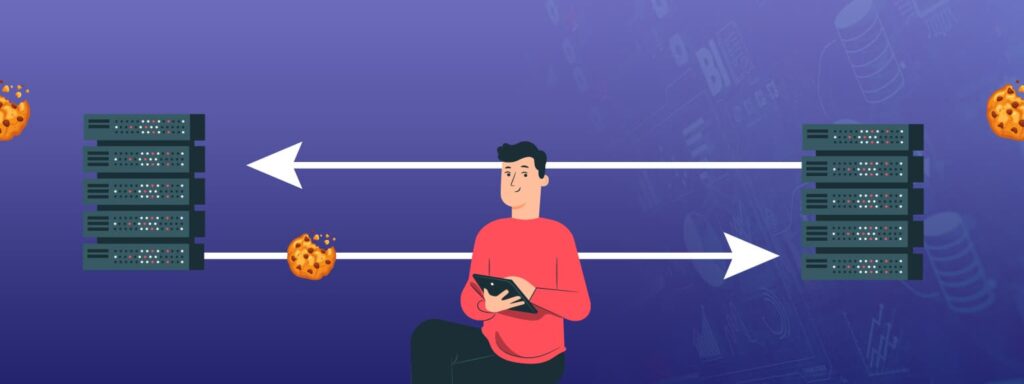
Without Experience Cloud ID Service:
On loading a webpage, the browser sends a request to our domain server for processing and returning an HTML page. Concurrently, Adobe also sends a visitor identification or tracking information request. But now, this request goes to our domain (like stats.nextrow.com) instead of Adobe’s DCS. Since both requests are from the same domain, they’re treated as the exact origin. This allows for setting first-party cookies. Hence, with CNAME in place, issues with third-party cookies and cross-origin requests are sidestepped by keeping everything in a first-party context.
Yet is cross-domain tracking possible with this method? For distinct domains, the answer leans towards no. If someone were to visit another domain after nextrow.com, Adobe could access previous cookies since they’re tied to stats.nextrow.com. However, in reverse scenarios, complications arise.
Adobe suggests using domain-specific CNAMEs if managing multiple domains. This way, every domain can operate within the first-party context. Yet, cross-domain tracking remains elusive without third-party cookies.
With Experience Cloud ID Service:
The Experience Cloud ID Service sets cookies only on the organization’s domain. With a custom tracking domain, Adobe doesn’t rely on its default DCS, thereby dodging cross-origin request limitations. While there are methods to redirect domains for cross-domain tracking, they don’t entirely address the core issue.
However, there’s a provision to share visitor IDs between domains using ‘appendVisitorIDsTo’ when third-party cookies face browser restrictions. But for this, navigation must occur between domains and not in isolation.
CNAME Implementation: The Summary
Implementing CNAME in Adobe Analytics without the Experience Cloud ID Service combats issues with cross-origin requests and third-party cookies.
With Experience Cloud ID Service, CNAME only tackles cross-origin requests since the cookies are inherently first-party.
Using CNAME doesn’t enable seamless cross-domain tracking across unique domains.

Important Side Note: Don’t fall into the trap of believing that a first-party context is a panacea. Apple, in November 2020, updated its policies to apply restrictions on cookies set through CNAME or Experience Cloud ID Service, categorizing returnees after a day or a week (based on ITPs) as new. Always be aware of the evolving landscape of digital privacy!
In a nutshell, while CNAME does offer certain advantages, a comprehensive understanding of its limitations is essential. As technology advances, one must continually adapt and stay informed.
Pro Tip: Harnessing the power of first-party data is paramount in a world moving beyond third-party cookies. A Customer Data Platform (CDP), like AEP, proficiently captures unique visitor profiles, collecting crucial details such as email addresses and phone numbers. Elevate your business insights with CDP, and dive deeper into the Adobe Analytics blog for better understanding.
How NextRow is helping Businesses?
Organizations need trusted partners like NextRow to effectively navigate the complexities of Adobe Analytics and harness its full potential, ensuring optimal data-driven strategies and maximized ROI. From implementations to hourly remote consulting to fixed monthly packages, we offer seamless workflow setup and integrations.
With our Adobe Analytics Managed Services, you can scale up the performance of your Adobe Analytics application with confidence. Let us know whenever you need emergency support; we have a global team with 24*7*365 support centers. Get started today or book a call for a free consultation.
Workday Journey Towards Interoperability: The Power to Adapt
In today’s fast-changing business world, constant adaptation is key. However, many organizations struggle to keep up due to complex tech setups and outdated systems that don’t play nice together. This forces employees to resort to manual workarounds and deal with clunky interfaces and scattered data.
The solution?
Interoperable technologies that let applications seamlessly communicate with one another. This is becoming a top priority because when your software tools work well together and share data effortlessly, your business can move with agility. Departments like finance and HR no longer waste time wrestling with data compatibility issues, allowing them to focus on what really matters.
Now, you might be wondering – how artificial intelligence will transform business. Well, Workday, led by its CTO Jim Stratton, is at the forefront of unlocking interoperability to make this happen. They’re harnessing the power of generative AI, and it’s poised to shape the future of work for the better.
What’s Next from Workday Generative AI?
Workday is taking big strides with its AI! Their main aim? To boost your capabilities and help to make swift, informed choices, letting you concentrate on what truly counts. They’re not just making big promises; they’re delivering.
Soon, they’ll introduce tools like planning for career growth, simplifying job descriptions, drafting offer letters, summarizing financial deals, and even spotting unusual patterns. All of this ensures you will get real value, not just buzzwords.
And guess what? A sneak peek of these amazing AI tools will be showcased at Workday Rising. But the full reveal? Stay tuned for the exciting stuff!
What does integration vs. interoperability mean, technically?
Imagine a busy intersection in a city where traffic from all directions meets. If each vehicle could communicate with the others, sharing their routes and speed, the intersection would work smoothly, without jams. In the world of business, this is what we call interoperability.
Think of each business tool or application you use as a vehicle. Interoperability ensures that all these tools can ‘talk’ to each other seamlessly, sharing vital information in real time. It’s like having a single, unified language that every tool understands and speaks. This ensures that everyone in the organization is on the same page, creating an atmosphere where decisions are made faster and better.
While many might mix up ‘interoperability’ with ‘integration’, there’s a key difference. Integration is like ensuring two vehicles fit together. Interoperability, however, is about what happens after they’re connected: How they work together, the routes they take, and the goals they achieve. It doesn’t just focus on the connection but encompasses the entire journey, ensuring everyone and everything works harmoniously.
Workday redefines the way we work, making things smoother, faster, and more efficient.

How Workday Unlocks Interoperability
Picture a world where all your business systems speak the same language, working together seamlessly. This dream can become a reality with Workday Generative AI.
Interoperability is the ability of systems to work together. And, while it’s a buzzword in the tech world, it’s a goal for many businesses. Enter Workday: a solution designed to help businesses reach this ideal state. With its roots in the cloud, Workday promises adaptability, scalability, and flexibility. It goes beyond just connecting different departments in an organization. Workday ensures that the entire company, be it customer-facing or back-end operations, is united, creating an environment where meaningful collaborations flourish.
But what sets Workday apart is its intelligence. Instead of having information scattered across different sections of a company, Workday gathers everything – from financial and employee data to planning metrics. It’s a central hub where all essential data comes together, removing the hassle of juggling between different databases. This centralization not only streamlines data collection but also offers valuable insights, making decision-making swifter and more informed.
And, if you’re thinking about the future, Workday is one step ahead. By integrating cutting-edge technologies like artificial intelligence (AI) and machine learning (ML), it transforms the way businesses operate. Imagine a system that detects irregularities before they become issues, offers smart suggestions, and even helps in refining your talent strategies. With Workday, these aren’t mere fantasies. While it employs these advanced tools, it ensures the power remains in human hands, removing tedious tasks but keeping decision-making with the people.

Workday interoperability and AI: less artificial, more intelligence
Meet software that not only understands your business needs but also proactively suggests solutions. By weaving in cutting-edge Artificial Intelligence (AI) and Machine Learning (ML) right from the foundation, Workday Generative AI ensures that these smart technologies are an integral part of its system. This isn’t just a last-minute add-on; it’s a deep-rooted feature.
Why does this matter?
Well, this integration means that whether you’re using apps originally built for Workday or tools crafted by its extensive network of customers and partners, you’ll benefit from this intelligence. At the heart of this system lies the intelligent data core. This element ensures that the AI and ML technologies are always working with the best quality of data. This precision ensures that you’re always getting the most accurate insights and suggestions.
Some of the standout features powered by this integration include the ability to spot unusual patterns, smart suggestions tailored to your unique needs, and advanced methods to nurture and retain talent based on their skill sets. But, what’s truly remarkable is that while Workday handles the intricate details, users remain firmly in the driver’s seat. It streamlines processes, removing the tedious tasks that once consumed so much time, and giving humans the freedom to focus on what truly matters.
Moreover, Workday understands the importance of using AI and ML ethically. They champion the cause of using these powerful tools responsibly. Their Responsible AI Governance program is a testament to their commitment. It ensures that while they harness the power of AI to serve businesses better, they never lose sight of the values of transparency and responsibility.
Propel your business growth with Workday.
Reality Check: Compressed transformation
Navigating today’s rapidly evolving business landscape, it’s clear that the pace of change is unlike any other. During the pandemic, half of all enterprises experienced a rapid shift, adapting faster than they ever imagined possible. This wasn’t just about speed, but also managing several changes at once. This fast-paced transformation, often powered by seamless connectivity and interoperability, is the new norm.
“Value Untangled” sheds light on how this accelerated pace of change is crucial for success in our fluid business world. And it’s not just about keeping up; it’s about thriving. Research confirms that when businesses achieve this seamless connectivity, positive and measurable results follow, across all industries. Embracing this new reality is essential in the form of Workday Generative AI. After all, in today’s world, adaptability and swift action are the difference between merely surviving and truly thriving.

How NextRow help automate business processes?
NextRow Digital is a leader in enterprise application managed services, cloud hosting, and consulting services. NextRow provides ongoing functional, technical, and administrative support to customers in production with Workday Financial Management and Workday Human Capital Management (HCM), providing clients with real-time operational visibility along with the speed and agility to adapt to business growth and change.
Harness the power of Nextrow’s seasoned Workday implementation consultants. From managing intricate projects to ensuring seamless training and support during go-live phases, we’re here to stand alongside your organization. Whether it’s introducing fresh Workday modules or amplifying your current setup with enhanced features, our expertise, built on years of industry experience, transforms complex challenges into straightforward solutions.
Trust in our tried-and-true methodologies to carry the weight of the process, guiding you meticulously at each juncture. Choose Nextrow and ensure a robust Workday implementation, you can book a meeting with our Workday Expert.
Getting Started with Marketo Velocity Scripting
In the world of email campaigns, personalization is the magic key that unlocks engagement and connection with your audience. After all, who doesn’t appreciate an email that speaks directly to their interests and needs? Marketo, our go-to email automation platform, offers two main ways to achieve this: dynamic content and Velocity Scripting. In this blog, we’ll dive into the world of Marketo Velocity Scripting, exploring its significance and how to harness its power.
Understanding Velocity Scripting in Marketo
Imagine sending out email campaigns tailored to the recipient’s state, ensuring that your communication resonates with their unique context. Marketo’s Velocity Scripting enables precisely this kind of dynamic personalization. It offers a robust solution for generating personalized and customized email content by leveraging data sources and conditions. Based on Apache Velocity, this scripting language empowers marketers to access and manipulate data, perform calculations, and create conditional logic within email templates.
Velocity scripting opens the door to a vast array of possibilities. You can dynamically populate email content based on lead attributes, behaviors, and even external data sources. The result? Emails that feel tailor-made for each recipient, enhancing engagement and conversion rates.
Ready to Utilize Velocity Marketing? Talk with Marketo Experts!
Why Velocity Scripting Matters in the modern world?

Velocity Scripting isn’t just another tool in the marketer’s toolkit – it’s a game-changer. While Marketo’s Dynamic Content feature offers excellent personalization capabilities, Velocity Scripting takes personalization to the next level.
Why Velocity Scripting?
- Scalability: Dynamic Content is great for straightforward personalization, but for recurring complex logic, Velocity Scripting shines. It’s scalable, making it ideal for automating repetitive tasks.
- Data-driven Personalization: With Velocity Scripting, you can create personalized content based on a range of data, from lead attributes to external data sources. This means you can craft emails that are not only relevant but highly specific to each recipient’s circumstances.
- Dynamic Content Generation: Velocity Scripting leverages the power of Apache Velocity to generate dynamic content on the fly. This means you’re not limited to static templates – your emails can adapt based on real-time data and conditions.
Implementing Velocity Scripting: Creating Script Tokens
The beauty of Velocity Scripting lies in its implementation simplicity. You can start harnessing its power through Email Scripting Tokens. Here’s a step-by-step guide on how to create and leverage these tokens:
- Token Creation: Velocity script finds its way into emails through Email Scripting Tokens. These tokens can be crafted within Marketing Activities, either in a Marketing Folder or a Program.
- Accessing the Editor: To create a token, navigate to your chosen folder or program and select the “My Tokens” tab. Drag the “Email Script” option from the right-hand menu into the token list.
- Customization: Rename the token as needed and open the editor using the “Click to Edit” option. Inside the editor, you have the canvas to create your script, with access to variables within script-accessible objects.
- Leveraging Variables: The intuitive interface allows you to seamlessly integrate variables into your script. Simply drag and drop variables from the right-hand tree into your script to reference fields from objects.
Embrace the Power of Personalization: Marketo Velocity Scripting
Velocity Scripting in Marketo opens a realm of possibilities for personalized email marketing. By dynamically generating content based on diverse data sources and conditions, you can deliver emails that resonate deeply with each recipient. Say goodbye to one-size-fits-all communication – with Velocity Scripting, your emails become tailored experiences that engage, convert, and drive success.
As you embark on your personalization journey with Marketo Velocity Scripting, remember that every script you create has the potential to elevate your email campaigns to new heights. Experiment, iterate, and craft emails that leave a lasting impact. The days of generic messages are over; it’s time to harness the power of personalization through Velocity Scripting.
Example of Marketo Velocity Scripting
Displaying a Greeting Based on Gender (Portuguese)
#if ( ${lead.gender} == “F” )
Cara Sra. Dra.
#else
Caro Sr. Dr.
#end
In this example, we show you how to display a gender-specific greeting in Portuguese. By checking the lead’s gender value stored in $lead.gender, we can tailor our greeting accordingly. If the gender is identified as female (“F”), the greeting becomes “Cara Sra. Dra.” (Dear Ms. Dr.). For male or unspecified genders, the greeting changes to “Caro Sr. Dr.” (Dear Mr. Dr.).
How has NextRow Leveraged Velocity Scripting in Marketo?

At NextRow, we have mastered integrating Marketo’s Velocity Scripting into our client’s marketing efforts, composing a symphony of success. Our strategy is centered on three characteristics that appeal to both clients and customers. Read about the Marketo Migration Phases for smart understanding.
- Personalized Content: We make highly customized email campaigns by dynamically changing the content based on the demographics and interests of the recipients. This way, we can send messages that are relevant and interesting.
- Advanced Transactional Emails: Using Velocity Scripting, we optimize transactional emails to give users a smooth and personalized experience. We do this by combining order details, product information, and personalized recommendations.
- Dynamic Subject Lines: With the clever use of Velocity Scripting, we’ve mastered the art of writing dynamic subject lines that can adapt to each recipient’s unique characteristics and actions. This magic of personalization not only gets people’s attention but also gets people to open emails a lot more.
Velocity Scripting in Marketo is no rocket science if applied correctly. If you think you could use an extra set of hands to implement the Velocity Scripting functionality in your email assets. Then your extended Marketo team at NextRow will be happy to pitch in, thus making you see an elevated engagement in your email marketing campaigns. With NextRow’s deep expertise in Marketo MOPS, we have supported many enterprise customers with optimized processes.
Get started today to reach new heights! Let’s Talk.
Marketo API: Integration Guide
In the fast-paced world of marketing, automation is a key tool to efficiently manage personalized…
Visualize your Marketing Goals with Marketo Engagement Canvas
Attention, marketing mavens, and visionaries! What is Marketo Engagement Canvas? The Engagement Canvas…
Building Blocks and Use Cases for CJA (Customer Journey Analytics)
A crucial step in realizing the full potential of your analytics projects as the digital landscape changes is the switch from Adobe Analytics (AA) to Customer Journey Analytics (CJA). Enter a world where the Adobe Experience Platform creates the foundation for a revolutionary analysis workspace experience.
Learn the essential foundational elements CJA needs to revolutionize your perception of multi-channel analytics. CJA transforms how you decode customer journeys, from user-friendly data definitions to sophisticated data manipulation.
Join us on an exciting journey through data-driven insights with our blog, “Building Blocks and Use Cases for CJA (Customer Journey Analytics).”
Overview of CJA
CJA distinguishes itself from Adobe Analytics by combining the strength of Analysis Workspace and a new dataset with the Adobe Experience Platform as its foundation. Years’ worth of data can be broken down, filtered, queried, and visualized using this cutting-edge analytics capability, and the Experience Data Model’s (XDM) flexibility ensures uniform representation and organization.
Traditional analytics are broadened by CJA, which provides cross-channel capabilities across web, mobile, call centres, and CRM. Get ready to start a transformational journey as CJA unearths the mysteries buried in your data.

Building Blocks and Use Cases
- Combining data from call centers, POS systems, and online properties, you can view and analyze customer data in the context of their customer journey.
- Democratize data access and allow more employees to use data to drive decisions based on thorough analysis.
- Give data scientists and analysts the tools to conduct sophisticated analyses and uncover deep insights.
- Investigate data from the Adobe Experience Platform by using on-demand reporting to visualize and interact with datasets.
- We broaden the scope beyond web data by utilizing unique schemas and gaining control over data manipulation.
- To create comprehensive data views that completely understand the customer journey, combine datasets, and define connections.

Prerequisites
- Customer Journey Analytics add-on and an active Adobe Analytics Select, Prime, or Ultimate subscription are needed.
- Customer Journey Analytics must be provisioned for Adobe Experience Platform in order to be seamlessly integrated.
- Without Adobe Analytics, Customer Journey Analytics is also available as a standalone product.
- Consult your Adobe Account Team to confirm the Customer Journey Analytics add-on’s availability and contract type.
Terminology Updates
- In Customer Journey Analytics, segments are now referred to as ‘Filters.’
- To comply with industry standards, virtual report suites are referred to as “Data views.”
- For better communication, classifications have been renamed as “Lookup datasets.”
- In Customer Journey Analytics, customer attributes are now referred to as ‘Profile Datasets.’
- In the context of Customer Journey Analytics, hit containers are referred to as ‘Event’ containers.
- ‘Session’ containers have taken the place of visit containers.
- To improve clarity and consistency, visitor containers are now referred to as ‘Person’ containers.
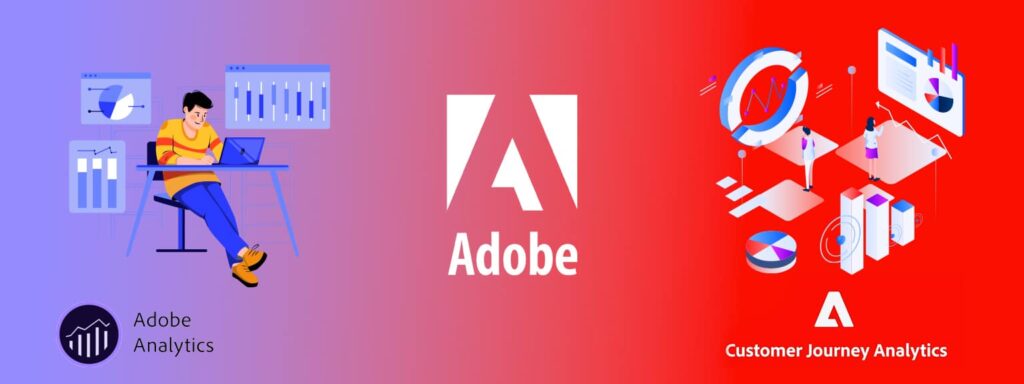
Why Choose NextRow Digital for AA to CJA Migration Journey?
For a smooth and successful transition from Adobe Analytics (AA) to Customer Journey Analytics (CJA), NextRow Digital is your ideal partner. Here’s how we differ:
Extensive Experience: Our team has years of experience as an Adobe Gold Partner and is well-versed in the intricacies of migration, resulting in a seamless transition.
Proven Success: We guarantee a smooth migration process and foster business expansion with our tried-and-true methodologies and strategies.
Comprehensive Support: From assessment and roadmap development to implementation and beyond, NextRow Digital provides end-to-end support.
Industry Best Practices: Our migration strategy adheres to validated best practices, guaranteeing accuracy, dependability, and industry compliance.
CJA Positioning & Key Use Cases
Customers engage in many online and offline touchpoints during their purchasing experience, which has evolved into a complicated and non-linear process. Due to this, there is a growing demand for sophisticated analytics solutions that can capture and analyze data from numerous sources. And leading the charge is Adobe’s revolutionary Customer Journey Analytics (CJA).
Customer Journey Analytics (CJA) is a powerful tool that helps organizations enhance the customer experience. It enables anyone responsible for customer engagement to visualize the complete customer journey across various data channels in real-time. By understanding the customer’s journey, organizations can make informed decisions and influence the crucial moments that shape customer experiences.
So, prepare for a revolutionary change as NextRow Digital unravels the mysteries of the customer journey and utilizes the power of Customer Journey Analytics (CJA) to redefine the future of marketing.
Evolution of Journey Analytics
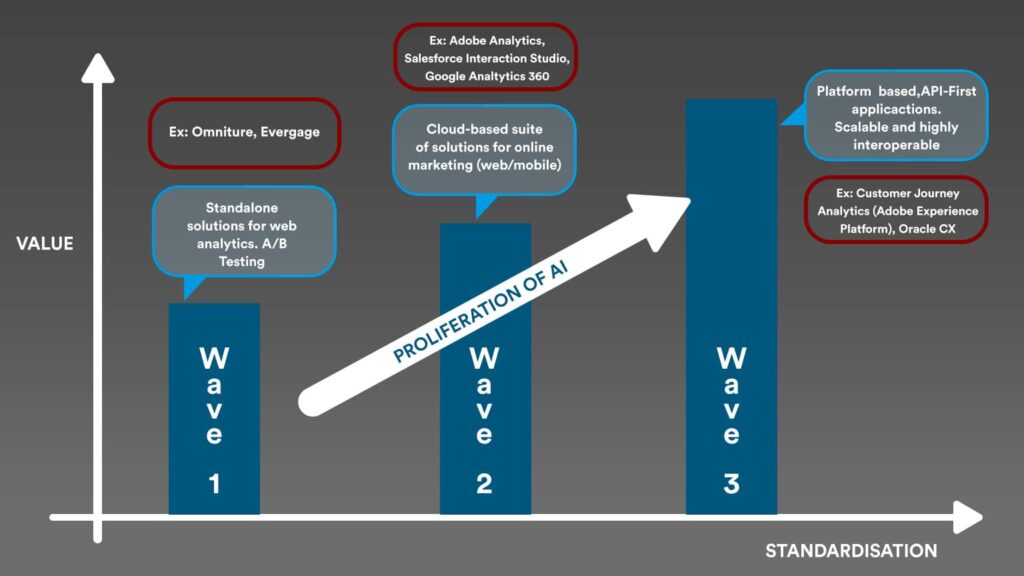
The journey of customer journey analytics has been marked by three distinct waves, each contributing to a deeper understanding of customer behavior:
- Standalone Web Analytics Platforms: Standalone web analytics platforms pioneered the initial generation of customer journey analysis, which observed and evaluated visitors’ activities on a company’s website.
- Integration into Cloud-Based Solutions: The second wave enabled firms to break down data silos and evaluate cross-channel consumer journeys by incorporating journey analytics into cloud-based systems like Adobe Experience Cloud.
- The Rise of Powerful Platform-Based Solutions: The current wave ushers in a new era of customer journey analytics characterized by powerful platform-based solutions. No longer limited to online channels, these solutions have boldly expanded into the realm of offline marketing and omnichannel journeys.
With the advent of first-party identifiers and device graphs, businesses now have the power to deliver accurate and personalized experiences to their customers. But it doesn’t stop there. These solutions have cracked the code of seamless data movement, allowing organizations to collaborate effortlessly and share valuable insights. And let’s not forget about the magic of AI and Machine Learning.
Customer Journey Analytics (CJA) by Adobe
Adobe’s Customer Journey Analytics (CJA) disrupts the analytics landscape by expanding into offline channels, offering a complete picture of the customer journey. Powered by the Adobe Experience Platform, it establishes open standards for marketing data, facilitating seamless integration across platforms.
While Adobe CJA takes the lead, alternatives like Oracle CX Cloud and SAS Customer Intelligence 360 bring their own strengths and unique features. Even amidst fierce competition, Adobe CJA shines as a powerful solution, unleashing the potential of offline channels. It empowers businesses with actionable insights and advanced analytics capabilities, enabling them to make informed decisions and drive meaningful customer experiences.
Journey Analytics Market Positioning
In the realm of analytics, two powerful forces emerge: Digital Intelligence (DI) and Enterprise Business Intelligence (BI).
DI thrives on automation-driven workflows, leveraging AI and machine learning to unlock actionable insights. It empowers businesses to uncover hidden patterns, track real-time trends, and understand customer behaviour at a granular level, enabling agile decision-making in the digital age.
On the contrary, BI takes a human-centered approach, emphasizing data analysts’ expertise. It combines vast information with human insights to drive strategic decision-making, providing a comprehensive platform for analyzing and visualizing data. This empowers organizations to gain deep operational and customer understanding.
NextRow: Unleashing the Power of Code and Content Complexity Analysis
By fusing automation-driven workflows with human ingenuity, organizations unlock a new level of analytics prowess, transforming data into valuable insights that drive success.
Key Use Cases for Journey Analytics
Let’s delve into the pivotal use cases that epitomize the transformative potential of journey analytics:
- Call Center Analytics: By seamlessly merging call center data with online interactions, telecom, and financial services industries gain profound insights into customer preferences, behaviors, and satisfaction levels. This invaluable intel paves the way for superior service delivery and propels customer-centric strategies.
- Click-to-Brick Analytics: Uniting the realms of physical and online experiences, retail and pharmaceutical sectors can revolutionize customer journeys. Scrutinizing the path from initial clicks to in-store purchases unveils untapped opportunities, optimizing touchpoints to elevate the overall customer experience.
- Augmented AI: Bestowing AI/ML capabilities upon citizen data analysts, telecom, media & entertainment, and high-tech industries unlock actionable insights from the vast ocean of customer data. Advanced analytics techniques fuel hyper-personalized experiences and foster a culture of data-driven decision-making.
- Journey Intelligence and Management: By centralizing insights gleaned from CRM systems and documents, pharmaceutical, high-tech, and media & entertainment sectors supercharge their email marketing and A/B testing prowess. This unlocks invaluable intelligence that heightens campaign effectiveness and nurtures customer relationships.
- Cross-Channel Attribution: Journey analytics proves its universal relevance by accurately tracking campaign conversions across all channels. Businesses gain the prowess to astutely select visitor identifiers, unravel the true impact of marketing endeavours, and masterfully optimize their omnichannel strategies.
In the quest for the ideal journey analytics solution, three vital factors command attention:
- Real-time Engagement Data Capture and Management: Embrace a solution that captures and manages data in real-time, empowering agile analysis and swift response to customer interactions.
- Seamless Customer Data Collection: Seek a solution that effortlessly aggregates data from multiple touchpoints and channels, offering a comprehensive view of the customer journey analytics.
- Advanced Profiling and Identity Capabilities: Opt for a solution with cutting-edge profiling and identity features, enabling meticulous customer profiling and comprehensive tracking across the entire journey.
Final Words
Harness the game-changing potential of Customer Journey Analytics (CJA) to propel your business forward. With CJA, dive deep into the multi-channel customer journey, extracting invaluable insights and paving the way for data-driven decision-making. Embrace the transformative capabilities of CJA, empowering your organization to confidently navigate the ever-evolving market landscape.
Let NextRow be your guiding light, unlocking the secrets to growth and elevating your customer experiences. Embrace the revolution of CJA and chart your path to success.
Step into the future of data-driven decision-making, where every move is fuelled by insights that drive success.
Engage with NextRow Digital
When selecting a journey analytics solution, prioritize reports and insights automation for streamlined analysis processes, customization, and interoperability to integrate with existing systems seamlessly. With NextRow Digital by your side, you can confidently navigate the journey analytics landscape and unlock the power of CJA for your organization’s success.
NextRow Digital’s seamless support for both IT teams and analysts can navigate the complexities of CJA implementation with ease. Their unrivalled expertise in implementing Adobe technologies will unlock the true power of CJA, propelling your business toward unprecedented growth.
Go-Live Phase: AEM as Cloud Service (AEMaaCS)
As the go-live phase of integrating AEM as a cloud service approaches, the stage is set, the spotlight is bright, and the digital transformation reaches its grand finale. The go-live phase marks the culmination of the implementation process for AEM as a cloud service. A smooth transfer from the current infrastructure to the cloud-based AEM environment is ensured during this crucial period, allowing businesses to fully realize the promise of their digital experiences.
In this blog, we will encompass the key aspects of AEM such as cloud service go-live and the invaluable assistance provided by the NextRow team in planning and strategizing the go-live cutover.
Go-Live Readiness Checklist: Essential Preparations for a Seamless Transition
It is essential to guarantee readiness on a number of fronts before starting the go-live phase. This entails determining the stability of the system, checking that all prerequisites have been satisfied, and certifying that all necessary preparations have been made. The basis for a smooth transition is laying a complete go-live readiness evaluation. Discover the key aspects to guarantee a successful live.
1.
Content Transfer: Unlocking Digital Assets and Importance of Seamless Data Migration

2.
Delta Transfer: Optimizing Performance and Importance of Efficient Incremental Updates

To keep the content up to date during the migration process, delta transfer plays a vital role. It involves transferring incremental changes made to the content since the initial transfer. By identifying and transferring only the modified or new content, delta transfer significantly reduces the overall transfer time and optimizes the migration process, ensuring efficient and timely updates.
3.
Code Triaging: Harmonizing the Codebase and Importance of Stability and Compatibility

During the go-live phase, it is essential to assess the codebase thoroughly and prioritize any necessary modifications or enhancements. Code triaging involves:
- Evaluating the existing code.
- Identifying potential issues or deprecated features.
- Streamlining the codebase to align with the new cloud-based AEM as a service environment.
This process ensures optimal performance, stability, and compatibility, paving the way for a robust and future-ready codebase.
4.
User Acceptance Testing (UAT): Perfecting the User Experience and Importance of User Satisfaction

UAT plays a pivotal role in the go-live phase, ensuring that the implemented features and functionalities meet user expectations. By conducting comprehensive UAT, organizations can gather valuable end-user feedback, identify usability issues, and make necessary adjustments. UAT allows us to fine-tune digital experiences and enhance user satisfaction, creating a delightful and user-centric environment.
5.
Performance Testing: Showcasing Excellence and Importance of Scalability and Responsiveness

Performance testing is a critical aspect of the go-live phase, aiming to assess the responsiveness, scalability, and stability of the AEM as a service environment under various workloads. By simulating real-world scenarios and stress testing the system, organizations can identify and address any performance bottlenecks, ensuring a seamless user experience even during peak usage periods.
In addition, performance testing highlights the system’s capabilities and ensures its ability to handle high-traffic loads, delivering exceptional performance and reliability.
NextRow: Your Maestro of the Go-Live Phase
In the complex and crucial go-live process, partnering with an experienced and reliable team can make all the difference. NextRow is at the forefront of enabling successful go-live cutover for organizations transitioning to AEM as a cloud service. With their deep expertise in AEM implementation, the NextRow team assists companies in planning and strategizing the go-live cutover, ensuring a seamless and efficient transition.
Their expertise helps organizations identify potential challenges, mitigate risks, and streamline the go-live process, ensuring minimal downtime and maximum business continuity.
Conclusion
As the countdown to go live begins, ensuring go-live readiness becomes paramount. From seamless content transfer and efficient delta updates to code triaging, UAT, and performance testing, each step contributes to a successful transition to AEM as a cloud service. By meticulously preparing and addressing these key aspects, organizations can elevate their digital experiences, enhance user satisfaction, and pave the way for future growth and success.
AEM as Cloud Service Post-go-live Optimization
Welcome to a realm where your digital aspirations take flight. In the vast landscape of AEM as a Cloud Service, the path to success doesn’t end with a go-live—it’s just the beginning. Get ready to embark on a thrilling expedition as we delve into the realm of post-go-live optimization. In this captivating blog, we unravel the secrets that will unlock the true potential of your AEM implementation.
From code refinement to access fortification, we’ll guide you toward a realm of unparalleled performance, innovation, and user experiences. Prepare to elevate your AEM game to extraordinary heights with NextRow Digital and turn your dreams into digital reality.
Post-Go-Live Optimization: Elevating Your AEM as a Cloud Service Transformation Process

So far, you’ve successfully taken your AEM cloud Service migration headway. From Migration readiness to planning and implementation, the journey has been a rollercoaster; however, to elevate performance, scalability, and innovation to unlock the full power of your platform, certain aspects should be considered during their post-go-live optimization process.
Code Cleanup: Paving the Path to Performance Excellence
Streamline your codebase by bidding adieu to redundancy, optimizing algorithms, and embracing industry best practices.
- Identify areas for improvement, retire outdated functionality, and improve the architecture as a whole.
- Eliminate redundant code, improve algorithms, and embrace industry best practices to streamline your codebase.
- Using methods like code restructuring, performance profiling, and caching systems, you may speed up load times, lessen complexity, and guarantee scalability.
- Improve the stability, maintainability, and extensibility of your code to provide a foundation for outstanding performance and seamless user interfaces.
Access Management: Enhancing Security and Collaboration
Safeguard your content management environment by prioritizing effective access management.
- Implement granular access controls, craft role-based permissions, and choreograph secure workflows for harmonious collaboration.
- Conduct a comprehensive audit to scrutinize user access rights, eliminate unnecessary privileges, and implement robust authentication mechanisms.
- Foster seamless collaboration with granular access controls, role-based permissions, and secure workflows.
- Regularly review and update access policies to ensure compliance and data integrity.
- Create a secure ecosystem that empowers content authors, editors, and administrators with appropriate access levels, balancing collaboration and stringent security measures for exceptional digital experiences.
Support and Expert Guidance: Post-Go-Live Optimization Success
In the post-go-live symphony, the orchestra of support plays a vital role. Dedicated support and expert guidance ensure a harmonious transition and resolve any hiccups along the way.
- Their virtuosos, experienced professionals, deliver timely assistance, wield efficient issue resolution, and serenade you with proactive recommendations to optimize your AEM as a Cloud Service environment.
- With your trusted partner, you can confidently compose innovative masterpieces and deliver exceptional digital experiences, knowing their seasoned ensemble stands by your side.
Log Management: Unveiling Actionable Insights
Unlock the power of proactive log management to gain valuable insights into system performance and issue resolution.
- Define log levels, implement robust frameworks, and leverage monitoring tools to capture vital information.
- Continuously monitor log files to identify errors, exceptions, and performance metrics.
- Analyze log data to optimize resource allocation, identify bottlenecks, and improve system efficiency.
- Harness log aggregation and analysis platforms for real-time monitoring and actionable insights, enabling proactive troubleshooting and driving continuous improvement for your AEM as a Cloud Service deployment.
Streamlining Post-Go-Live Deployment Cycles: Accelerating Innovation
Fuel innovation and maintain agility by streamlining deployment cycles in the post-go-live phase.
- Implement efficient CI/CD pipelines, automated testing frameworks, and release orchestration tools for a streamlined process.
- Automate build, testing, and deployment processes to reduce time-to-market for new features and enhancements.
- Ensure code stability and maintainable releases through version control, branching strategies, and continuous integration.
- Embrace infrastructure-as-code and containerization for seamless scalability and rapid environment provisioning.
- Streamlined deployment cycles enhance agility, mitigate risks, and empower your teams to rapidly innovate, delivering impactful updates and enhancements for exceptional digital experiences.
Partner with NextRow for Post Go-Live Optimization Success

As you navigate the complexities of post-go-live optimization, NextRow can be your trusted partner. Their experienced professionals guide code cleanup, access management, log management, and streamlining deployment cycles. With NextRow’s comprehensive support and expertise, you can confidently tackle the challenges of post-go-live activities.
By partnering with NextRow, you unlock the full potential of AEM as a Cloud Service, delivering exceptional digital experiences to your users. Together, you can optimize your platform, enhance performance, and ensure the long-term success of your AEM implementation.
Conclusion
As we conclude this journey of AEM as a Cloud Service post-go-live optimization, you are equipped with the required knowledge and tools to boost your digital experiences to new horizons. You can elevate performance, fortify security, and foster innovation by embracing these strategies. Take the reins of your AEM implementation, optimize it to perfection, and unleash its full potential.
Migration Planning and Setup: AEM as a Cloud Service (AEMaaCS)
While Adobe never fails to surprise its users, it recently launched its AEM cloud service. As a result, the road to digital transformation has been forever changed by its inception. Planning and setting up your migration to AEM as a cloud service is a critical step toward leveraging the full potential of Adobe’s powerful platform. This blog will delve into the essential aspects of migration planning and setup, focusing on content preparation, code refactoring, environment strategy, and the valuable assistance provided by the NextRow team.
Come experience a streamlined migration process, reduced complexity, and ensure a seamless transition to AEM as a Cloud Service.
Planning Content Preparation and Reducing Complexity
Although we discussed the importance of Migration readiness and the efficacy of tools like BPA and CAM, effective content planning and deployment are key to a successful migration. In such cases, The Content Transformer tool is your ally in simplifying this process, enabling you to transform and adapt your existing content to align with the cloud-native architecture of AEM.
By utilizing the Content Transformer, you can reduce complexity, ensure data integrity, and maintain a seamless user experience. Careful evaluation of your content’s structure, metadata, and relevance is essential to optimize its performance in the cloud environment. With meticulous planning and the assistance of the NextRow team, you can efficiently prepare your content for a smooth migration.
Creating a Code Refactoring Plan for Compatibility

Code refactoring plays a crucial role in the migration planning and setup phase alongside content preparation. To achieve compatibility with AEM as a cloud service, businesses must assess and update their existing code repository.
- By creating a comprehensive code refactoring plan, organizations can identify and address outdated code, eliminate deprecated functionalities, and optimize overall code performance.
- This procedure entails analyzing the present codebase in-depth, determining dependencies, and putting current coding standards into effect.
Businesses can increase the stability, scalability, and maintainability of their code repository by systematically rewriting it to conform to the high requirements that AEM establishes as a cloud service.
- Determine any out-of-date or ineffective code by analyzing the present codebase.
- Adopt contemporary coding standards and get rid of out-of-date features.
- To improve stability and scalability, optimize the performance of your code.
- As a cloud service standard, take care to address dependencies and make sure AEM is compatible.
Environment Strategy for a Smooth Migration
Moving to AEM as a cloud service requires a strong environment plan. To ensure a smooth transition, this strategy calls for careful design of the architecture, infrastructure, and deployment procedures.
Factors including scalability, redundancy, disaster recovery, and performance optimization must be given considerable thought.
- Organize the architecture and infrastructure to meet AEM’s needs for a cloud service.
- Determine the optimal cloud infrastructure provider and deployment models.
- Establish best practices for monitoring, management, and performance optimization.
- Finally, implement robust disaster recovery mechanisms to ensure business continuity.
By designing and implementing a well-thought-out environment strategy, businesses can minimize downtime, mitigate risks, and lay a solid foundation for a smooth migration experience.
Leveraging NextRow’s Expertise in Migration and Planning Setup
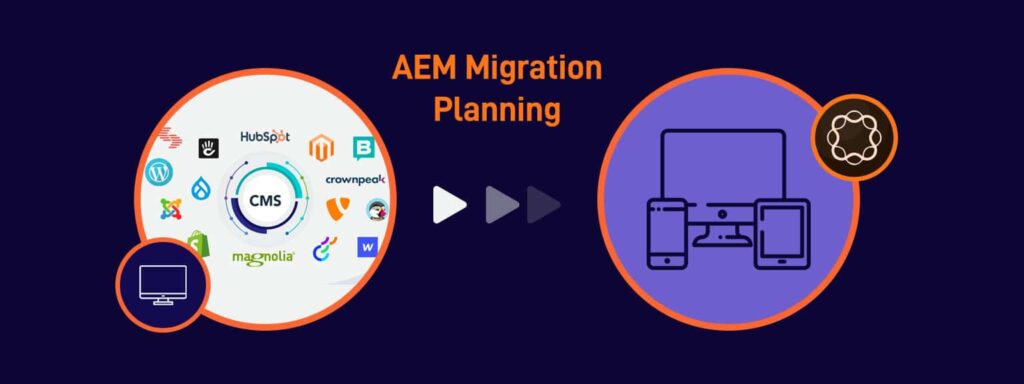
Navigating the intricacies of migration planning and execution can be challenging. The NextRow team offers invaluable support in planning and implementing changes and updates to your code and content. In addition, with our deep understanding of AEM and industry best practices, we can guide you in optimizing your migration approach.
Whether it’s planning code refactoring, strategizing content transformation, or aligning with the cloud-native environment, NextRow’s expertise ensures a seamless migration experience. By partnering with NextRow, you can leverage our knowledge, experience, and proven methodologies to successfully migrate to AEM as a Cloud Service.

